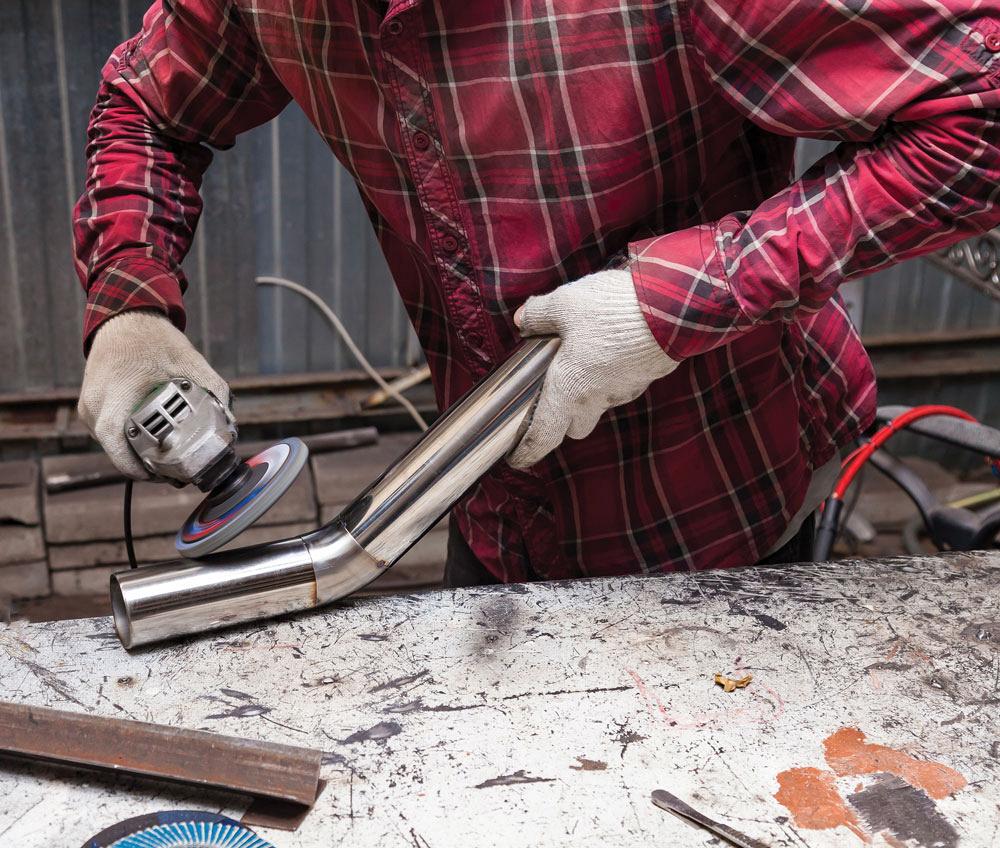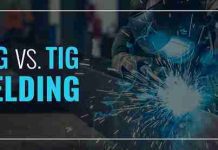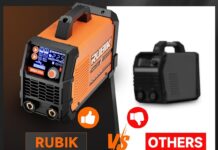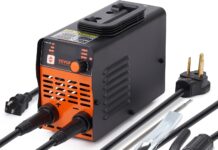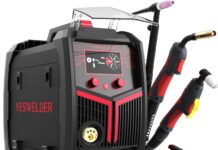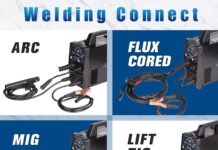In the world of metal fabrication, preparedness is key. Before diving into the intricate art of welding, one must first understand the crucial steps involved in preparing metal surfaces. From cleaning and degreasing to eliminating rust and ensuring proper fit-up, these preparatory measures lay the foundation for flawless welding. In this article, we explore the essential techniques and tools required to achieve optimal results when preparing metal surfaces for welding. Preparing metal surfaces for welding is essential to ensure strong and durable welds. Without proper preparation, the welding process can be compromised, leading to weak joints and potential failures. In this comprehensive guide, we will explore various techniques and methods for cleaning, surface preparation, preventing contamination, and ensuring safety in the welding process.
This image is property of cdn.thefabricator.com.
Cleaning the Metal Surface
Removing Dirt and Debris
Before beginning any surface preparation, it is vital to remove dirt, dust, and debris from the metal surface. This can be done using a brush, compressed air, or a vacuum cleaner. By eliminating loose particles, we create a clean surface that allows for better adhesion and bonding during the welding process.
Degreasing the Surface
In addition to removing dirt and debris, it is important to eliminate any greasy or oily residues from the metal surface. Grease and oil can hinder the welding process and prevent proper fusion of the metals. To degrease the surface, we can use solvents or specialized degreasing agents. These products effectively dissolve and remove oil, leaving the metal surface clean and ready for welding.
Removing Rust and Corrosion
Rust and corrosion can greatly impact the quality and longevity of a weld. Before welding, it is crucial to remove any rust or corrosion present on the metal surface. This can be achieved through various methods, such as wire brushing, sanding, or chemical cleaning. By eliminating rust, we ensure better weld penetration and prevent potential weak points in the weld joint.
Surface Preparation Techniques
Grinding
Grinding is a common technique used for surface preparation in welding. It involves using a grinder with abrasive wheels or discs to remove surface irregularities, roughen the metal, and create a clean and smooth surface. Grinding is particularly effective for removing mill scale, weld spatter, and other stubborn contaminants.
Sanding
Sanding is another effective technique for surface preparation. It involves using sandpaper or sanding discs to manually smooth and remove imperfections on the metal surface. Sanding is often used for smaller areas or intricate surfaces that are difficult to access with a grinder. It helps create a clean and uniform surface, allowing for optimal weld quality.
Wire Brushing
Wire brushing is a versatile method for surface preparation that is suitable for various metals. It involves using a wire brush to remove loose paint, rust, and other contaminants from the metal surface. Wire brushing not only cleans the surface but also helps create a roughened texture for improved adhesion of the weld.
Chemical Cleaning
Chemical cleaning is a highly effective method for removing stubborn contaminants and preparing the metal surface for welding. It involves using chemical solutions or cleaners that can dissolve and remove grease, oil, rust, and other forms of surface contamination. Chemical cleaning is particularly useful for intricate or hard-to-reach areas where mechanical methods may be challenging.
Surface Cleaning Methods
Solvent Cleaning
Solvent cleaning is a popular method for removing oils, greases, and other organic contaminants from the metal surface. It involves using solvents such as acetone, isopropyl alcohol, or specialized degreasers to dissolve and remove the contaminants. Solvent cleaning is relatively quick and easy, making it an efficient choice for surface preparation.
Acid Cleaning
Acid cleaning is a more aggressive method that utilizes acidic solutions to remove rust, scale, and other surface impurities. The acid reacts with the contaminants, breaking them down and facilitating their removal. However, acid cleaning should be approached with caution as it can be corrosive and potentially harmful to the user and the environment. Proper protective gear and ventilation are essential when using acid-based cleaners.
Alkaline Cleaning
Alkaline cleaning is an alternative to acid cleaning that uses alkaline solutions to remove contaminants from the metal surface. Alkaline cleaners are generally safer to use and less corrosive than acids. They effectively remove oils, greases, and light rust, providing a clean surface for welding. However, like acid cleaning, proper safety measures should be followed when working with alkaline cleaners.
Vapor Degreasing
Vapor degreasing is a specialized cleaning method that utilizes vaporized solvents to remove contaminants from the metal surface. The metal object is exposed to the vapor, which condenses on the surface, dissolving and carrying away the contaminants. Vapor degreasing is particularly effective for complex shapes or delicate components that may be difficult to clean using other methods.
Surface Roughening
Mechanical Abrasion
Mechanical abrasion involves physically roughening the metal surface to enhance adhesion and weld quality. It can be done using techniques such as sandblasting, grinding, or wire brushing. By creating a roughened texture, mechanical abrasion allows for increased surface area and better interlocking of the weld material.
Blasting
Blasting is a technique that involves using compressed air or other methods to propel abrasive particles onto the metal surface. The high-velocity impact of the particles removes rust, scale, old paint, and other contaminants, leaving a clean and roughened surface. Blasting is commonly used for larger areas or heavy-duty cleaning requirements.
Chemical Etching
Chemical etching is a process that uses acid or alkaline solutions to selectively remove a thin layer of metal from the surface. This creates a microscopically roughened texture, improving adhesion and bonding during welding. Chemical etching is particularly useful for materials like stainless steel, where a passive oxide layer needs to be removed for optimal weld quality.
This image is property of cdn.thefabricator.com.
Preventing Contamination
Cleaning Tools
To prevent contamination during surface preparation and welding, it is crucial to use clean and dedicated tools. Brushes, grinding discs, sandpaper, and other equipment should be regularly cleaned and inspected for any dirt or debris. Using separate tools for different metals or areas can help prevent cross-contamination.
Protective Coatings
Applying a protective coating or barrier on the cleaned metal surface can help prevent contamination before welding. This can be done using temporary coatings, such as weldable primers or anti-spatter sprays. These coatings provide a protective layer that prevents oxidation, rust, or other contaminants from reappearing during the welding process.
Preventing Contact
To further minimize contamination risks, it is important to prevent direct contact with the cleaned metal surface before welding. Bare hands, oily gloves, or contaminants from the environment can all compromise the cleanliness of the surface. Using clean gloves, handling the metal with care, and storing it in a clean environment can help maintain the integrity of the prepared surface.
Material Thickness Considerations
Thin Materials
When working with thin materials, extra care must be taken during surface preparation. Delicate materials can easily deform or warp under excessive heat or mechanical stress. Light sanding, wire brushing, or chemical cleaning methods are often preferred over aggressive techniques like grinding or blasting to avoid damaging the thin metal.
Thick Materials
Thick materials can pose their own challenges during surface preparation. Due to their thickness, they may require more aggressive methods to remove contaminants or create the desired roughened texture. Techniques like grinding or blasting can be utilized to effectively clean and prepare the metal surface for welding.
This image is property of cdn.thefabricator.com.
Surface Preparation for Different Metals
Carbon Steel
Carbon steel is a commonly used metal in welding applications. To prepare a carbon steel surface for welding, it is important to remove any rust, mill scale, or oil residues. Wire brushing or abrasive cleaning methods like grinding or sanding are often effective in removing these contaminants. The surface should then be cleaned using a suitable solvent to eliminate grease or oil.
Stainless Steel
Stainless steel requires specific surface preparation techniques to ensure optimal weld quality. In addition to removing rust and surface contaminants, it is crucial to remove the passive oxide layer that forms naturally on stainless steel. This can be achieved through mechanical methods like wire brushing or abrasive cleaning, or through chemical etching using acid-based cleaners.
Aluminum
Aluminum surfaces should be thoroughly cleaned and degreased before welding. Aluminum is prone to oxidation, so it is essential to remove any oxide layer or contamination. Mechanical methods such as wire brushing or abrasive cleaning can be used to remove surface impurities. Additionally, a suitable cleaner or etchant can be used to remove the oxide layer and promote better adhesion during welding.
Cast Iron
Preparing a cast iron surface for welding requires special attention due to its unique properties. Cast iron is brittle and prone to cracking, so extreme care must be taken during surface preparation. Removing any paint, rust, or impurities is important, but mechanical roughening methods should be avoided to prevent microfractures. Chemical cleaning using acid or alkaline solutions is often preferred for cast iron surface preparation.
Pre-Weld Cleaning Procedures
Tacking
Before welding, it is common to tack the metal pieces together to ensure proper alignment. However, tacking can introduce contaminants, such as weld spatter or slag, to the joint area. To mitigate this, it is essential to clean the tacked area, removing any spatter and slag that may have formed during the tacking process. This ensures a clean starting point for the final weld.
Cleaning Weld Areas
Prior to performing the final weld, it is crucial to clean the weld areas thoroughly. This involves removing any remaining contaminants, such as rust, mill scale, or oil residues, from the immediate vicinity of the joint. Wire brushing, grinding, or chemical cleaning methods can be employed to achieve a clean surface for welding.
Final Cleaning
The final cleaning step before welding involves a comprehensive inspection of the prepared surface to ensure its cleanliness. Any remaining contaminants should be removed, and the surface should be thoroughly cleaned using suitable cleaning agents or solvents. This ensures that the metal surface is free from any impurities that could compromise the quality of the weld.
This image is property of www.empireabrasives.com.
Inspection Processes
Visual Inspection
Visual inspection is a critical step in ensuring the quality of the prepared surface and the subsequent weld. It involves a thorough visual examination of the metal surface to identify any remaining contaminants, damage, or irregularities. Visual inspection allows for immediate feedback and correction, ensuring that the surface is clean and ready for welding.
Non-Destructive Testing
In addition to visual inspection, non-destructive testing (NDT) methods can be employed to further verify the cleanliness and integrity of the prepared surface. NDT techniques, such as magnetic particle testing, dye penetrant testing, or ultrasonic testing, can detect hidden defects or surface irregularities that may not be visible to the naked eye. These methods provide added assurance of the surface quality before welding.
Safety Measures
Protective Gear
Safety should always be a top priority in welding, and proper protective gear is essential. When preparing metal surfaces for welding, it is important to wear suitable personal protective equipment (PPE), including gloves, safety glasses, a helmet, and protective clothing. Depending on the specific cleaning methods used, additional gear such as respiratory protection or chemical-resistant clothing may be required.
Ventilation
Adequate ventilation is crucial during surface preparation and welding to ensure the removal of fumes, gases, and airborne contaminants. An enclosed workspace with effective ventilation systems, such as local exhaust ventilation or general ventilation, helps maintain air quality and minimizes the risk of exposure to harmful substances. Working outdoors or in well-ventilated areas is also recommended.
Fire Prevention
Surface preparation involves the use of various tools, chemicals, and cleaning agents, which can all pose fire hazards if not handled properly. It is essential to follow strict fire prevention measures, such as keeping flammable materials away from the work area, using spark-resistant tools, and having suitable fire extinguishing equipment readily available. Following proper storage and handling procedures for chemicals is also important to minimize fire risks.
As we can see, preparing metal surfaces for welding is a multi-step process that involves cleaning, surface roughening, preventing contamination, and ensuring safety. By following proper techniques and methods, we can achieve the cleanest and most suitable surfaces for welding, resulting in strong, durable, and high-quality welds. Remember to always prioritize safety and use the appropriate protective gear when working with cleaning agents, tools, and during the welding process.
This image is property of cdn.canadianmetalworking.com.







